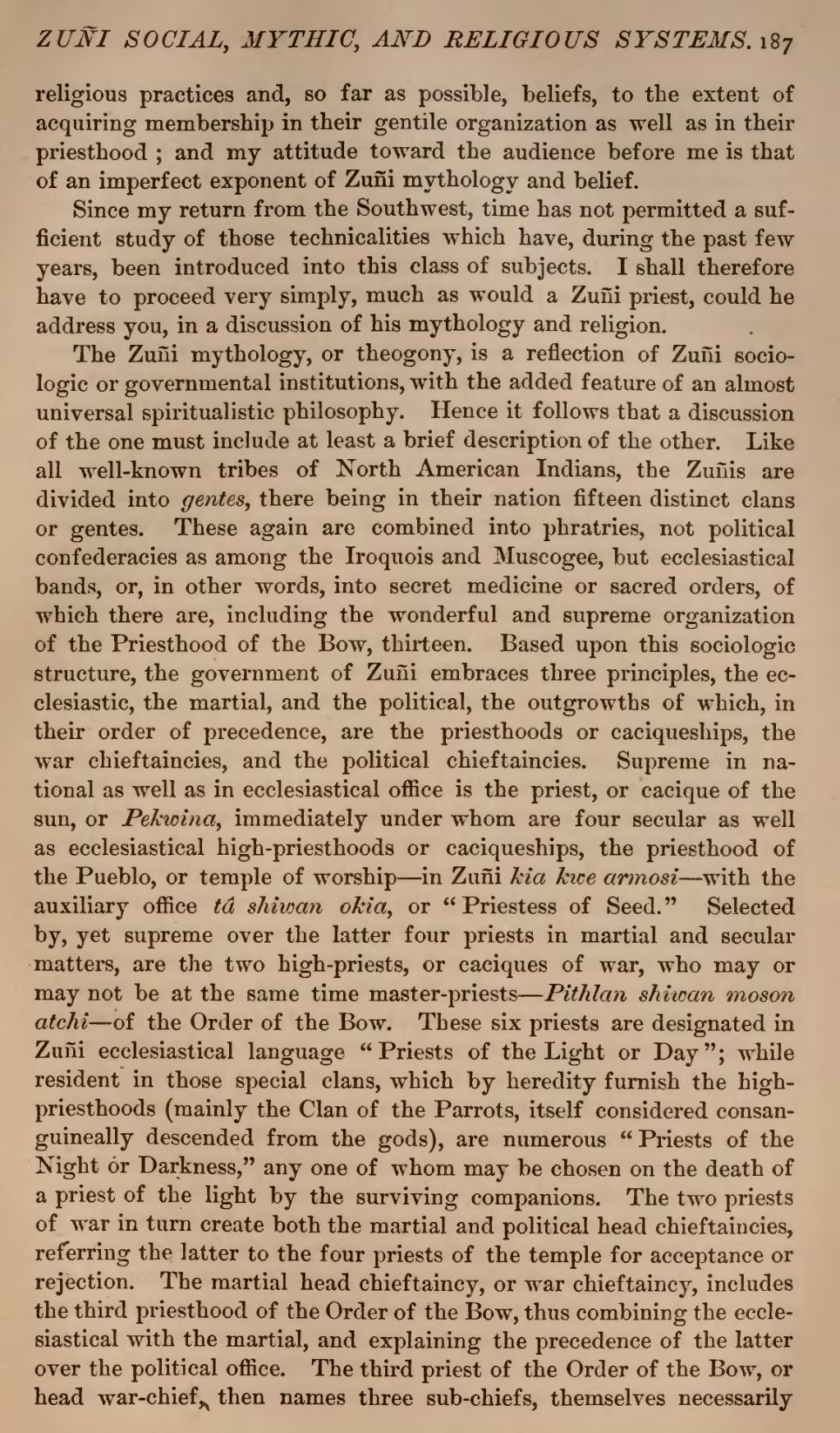religious practices and, so far as possible, beliefs, to the extent of acquiring membership in their gentile organization as well as in their priesthood; and my attitude toward the audience before me is that of an imperfect exponent of Zuñi mythology and belief.
Since my return from the Southwest, time has not permitted a sufficient study of those technicalities which have, during the past few years, been introduced into this class of subjects. I shall therefore have to proceed very simply, much as would a Zuñi priest, could he address you, in a discussion of his mythology and religion.
The Zuñi mythology, or theogony, is a reflection of Zuñi sociologic or governmental institutions, with the added feature of an almost universal spiritualistic philosophy. Hence it follows that a discussion of the one must include at least a brief description of the other. Like all well-known tribes of North American Indians, the Zuñis are divided into gentes, there being in their nation fifteen distinct clans or gentes. These again are combined into phratries, not political confederacies as among the Iroquois and Muscogee, but ecclesiastical bands, or, in other words, into secret medicine or sacred orders, of which there are, including the wonderful and supreme organization of the Priesthood of the Bow, thirteen. Based upon this sociologic structure, the government of Zuñi embraces three principles, the ecclesiastic, the martial, and the political, the outgrowths of which, in their order of precedence, are the priesthoods or caciqueships, the war chieftaincies, and the political chieftaincies. Supreme in national as well as in ecclesiastical office is the priest, or cacique of the sun, or Pekwina, immediately under whom are four secular as well as ecclesiastical high-priesthoods or caciqueships, the priesthood of the Pueblo, or temple of worship in—Zuñi kia kwe armosi—with the auxiliary office tâ shiwan okia, or "Priestess of Seed." Selected by, yet supreme over the latter four priests in martial and secular matters, are the two high-priests, or caciques of war, who may or may not be at the same time master-priests—Pithlan shiwan moson atchi—of the Order of the Bow. These six priests are designated in Zuñi ecclesiastical language "Priests of the Light or Day"; while resident in those special clans, which by heredity furnish the high-priesthoods (mainly the Clan of the Parrots, itself considered consanguineally descended from the gods), are numerous "Priests of the Night or Darkness," any one of whom may be chosen on the death of a priest of the light by the surviving companions. The two priests of war in turn create both the martial and political head chieftaincies, referring the. latter to the four priests of the temple for acceptance or rejection. The martial head chieftaincy, or war chieftaincy, includes the third priesthood of the Order of the Bow, thus combining the ecclesiastical with the martial, and explaining the precedence of the latter over the political office. The third priest of the Order of the Bow, or head war-chief then names three sub-chiefs, themselves necessarily
